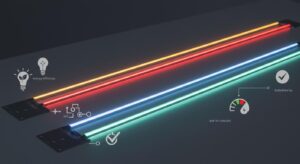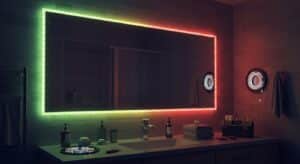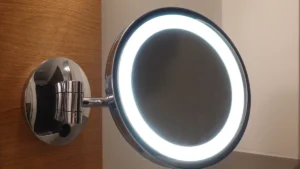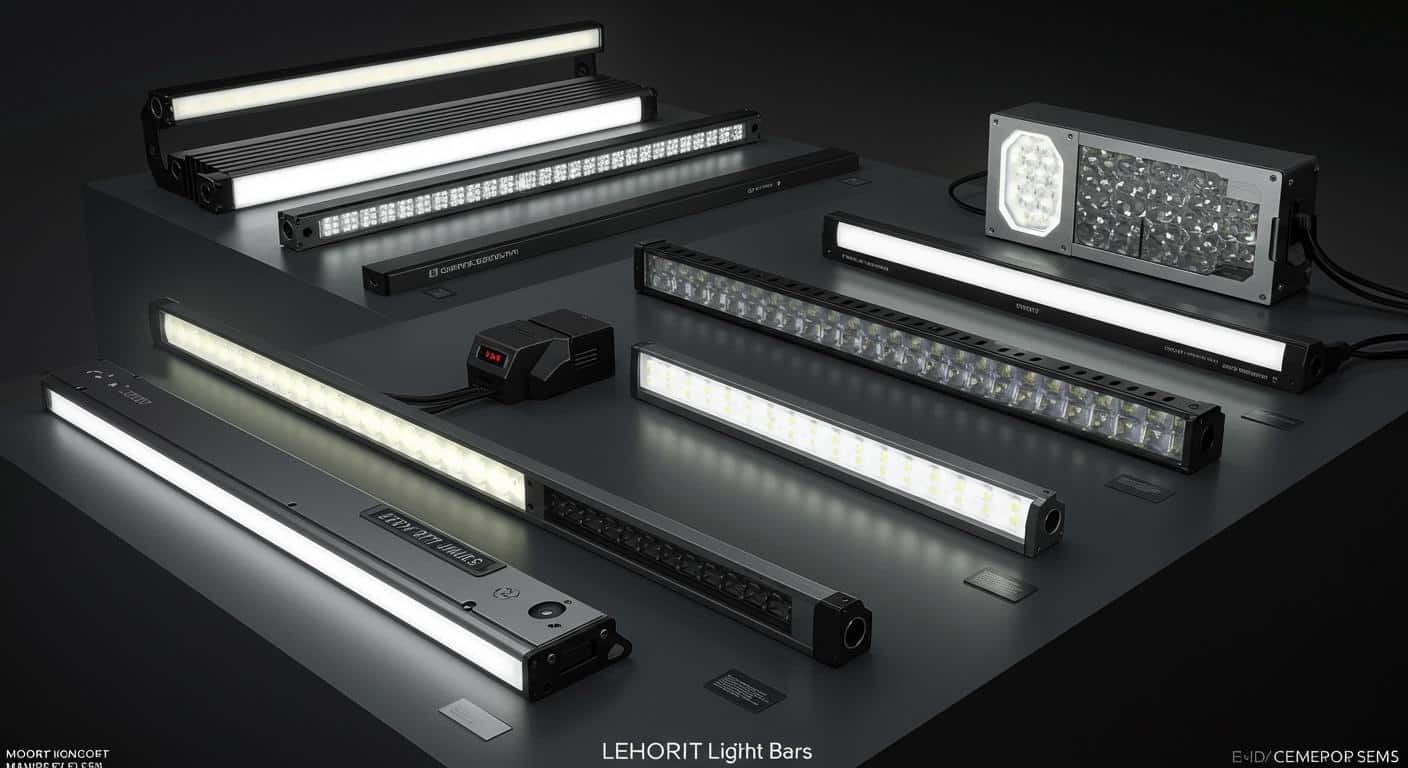
Choosing the right LED lens light bar is very important. It affects how well things work in different situations. You might need strong lights for cars, factories, or stores. Knowing what you need is very important. Many places use LED lens light bars to light up areas well. For instance, car lights help you see better and stay safe. Factories need strong lights to work properly. Think about size, brightness, and beam pattern to help you choose wisely.
Here’s a quick look at some common applications of LED lens light bars:
anwendung | Description |
|---|---|
Automotive | Used for headlights, tail lights, inside lights, and infotainment systems. |
Consumer Electronics | Important for displays, indicators, and backlighting for TVs, smartphones, and monitors. |
Industrial | Used for factory lighting, warehouse lights, and safety lights. |
Healthcare | Used in surgical lights, exam lights, and therapy devices. |
Retail | Improves product displays and store lights, helping save energy costs. |
Key Takeaways
First, find out what kind of light you need. Think about where you will use it, how bright it should be, and any special features you want.
Know that size and shape matter. Small bars fit in tight spots, while medium bars give good visibility and size.
Learn about lumens to measure brightness. More lumens mean brighter light, which is important for safety in different uses.
Pick the right beam pattern for your needs. Spot beams are good for seeing far away, while flood beams cover a wide area.
Look at the durability and IP ratings. A higher IP rating means better protection from dust and water, helping your light bar last longer.
Lighting Requirements
Knowing your lighting needs is very important when picking an LED light bar. Different uses need different features to work well. By figuring out what you need, you can choose wisely to improve safety and performance.
Identifying Specific Needs
Before buying an LED light bar, think about its main purpose. Ask yourself these questions:
What environment will the light bar be used in?
What level of brightness is necessary for your application?
Do you need special features, like waterproofing or certain beam patterns?
These questions will help you pick the right product. For example, if you want to use the light bar for off-road trips, you might need both spot and flood beams. This helps light up faraway paths and nearby areas. If you need lights for emergency vehicles, flashing lights are very important for safety.
Applications and Their Demands
Different uses have different lighting needs. Here’s how various settings affect your choice of LED light bars:
Application Type | Key Features Required |
|---|---|
Off-Road Vehicles | Spot and flood beams, IP67 waterproof rating, and strong mounting options. |
Emergency Vehicles | Flashing lights for visibility, high waterproof ratings, and safe mounting. |
Marine Applications | Marine-grade build, IP68 waterproof rating, and resistance to rust. |
Commercial Lighting | High brightness, energy efficiency, and color temperature around 4000K for productivity. |
Residential Lighting | Lower brightness for comfort, usually around 3000K for a cozy feel. |
For example, off-road vehicles often need a strong LED light bar with both spot and flood beams. This setup helps with long-distance and wide-area visibility. Emergency light bars must focus on being seen and reliable, often having flashing lights and high waterproof ratings.
In commercial places, the focus is on safety and productivity. Higher brightness helps people see better at work, while energy efficiency cuts costs. In homes, the goal is comfort and looks, so softer lighting is usually chosen.
By knowing these specific needs, you can choose LED light bar features that fit your situation, helping you get the best results.
Size and Shape of LED Light Bars
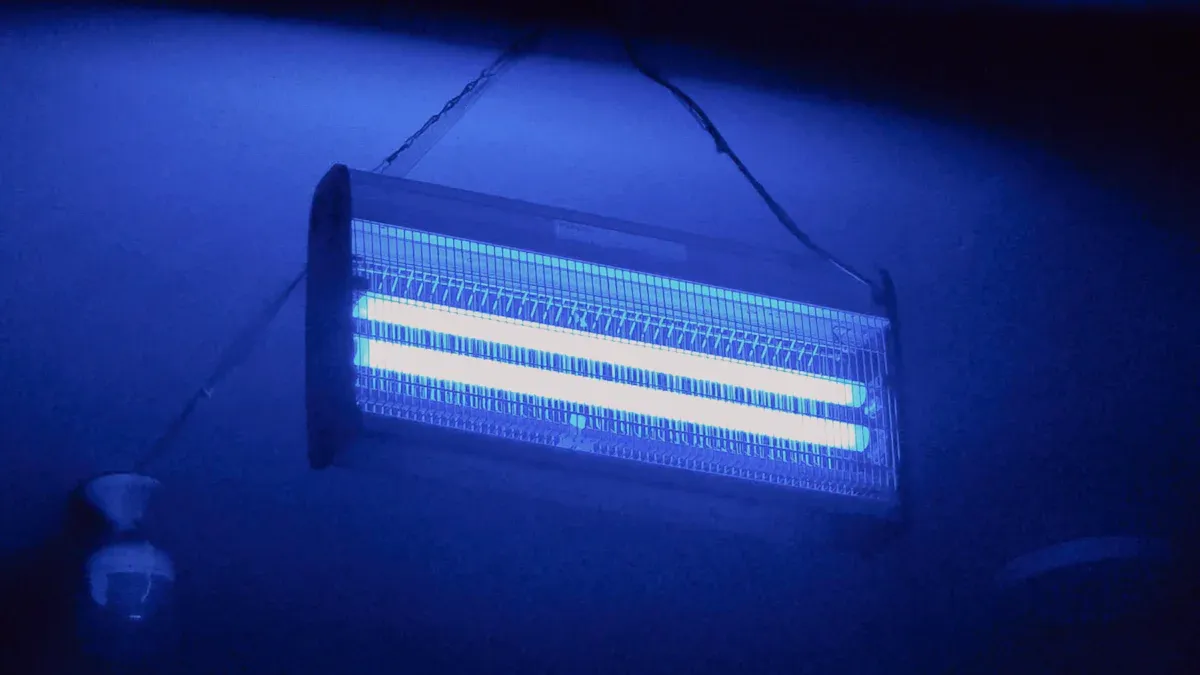
When you pick an LED light bar, size and shape are very important. They help decide how well it works for your needs. The right size can make things easier to see and help with installation.
Small vs. Medium Bars
LED light bars come in many sizes, usually from 4 inches to 50 inches. Smaller bars are great for small vehicles or places where space is tight. They give enough light without being too big for the vehicle. Medium-sized bars are a good mix of visibility and size. They work well for many vehicles and uses.
Here’s a quick look at what different sizes are used for:
Small LED Light Bars (4-20 inches):
Best for motorcycles or ATVs.
Good for inside lighting or extra lights.
Medium LED Light Bars (21-50 inches):
Often used on trucks and SUVs.
Great for off-road use where you need more light.
Choosing the Right Form Factor
The shape of your LED light bar can change how it installs and works. You can pick between curved and flat designs based on what you need:
Curved Light Bars:
Fit the shape of vehicles, good for the front or top.
Look nice and work well with the vehicle’s design.
Flat Light Bars:
Can be mounted in many places.
Might not fit the vehicle’s shape as well but can be used in different ways.
By knowing how size and shape matter, you can choose the right LED light bar for your needs. This choice will help both how well it works and how your vehicle looks.
Brightness and LED Lens Light Bar
Understanding Lumens
Lumens show how much visible light comes from a source. When you choose an LED light bar, knowing about lumens is very important. More lumens mean brighter light. This helps you see better in different situations. For outdoor use, the usual lumen output can change based on what you need.
Lumen Output Range | Application Description |
|---|---|
3,000–5,000 lumens | Good for small vehicles or extra lighting. |
6,000–10,000 lumens | Great for off-road driving and work tasks. |
10,000+ lumens | Best for strong lighting in tough conditions. |
Picking the right lumen output helps you meet your lighting needs.
Balancing Brightness and Efficiency
Brightness is important, but efficiency matters too. You want to see well without using too much power from your vehicle. LED light bars give bright light while using less energy than regular lights.
For example, a 20-inch LED light bar with 8,000 to 15,000 lumens can really improve visibility. This output shows how far the light can reach.
LED books | Lumen Output | Lux Rating at 10m |
|---|---|---|
20-inch Bar | 8,000 – 15,000 | Shows visibility distance |
The SIBERIA OUTLAW 22″ LED light bar shows this balance well. It has a beam distance of 3,852 feet with 13,007 actual lumens, giving a lux rating of 1 lux at 1,174 meters (3,852 feet). This shows how good lighting can improve safety and visibility in many uses.
By learning about lumens and balancing brightness with efficiency, you can choose an LED lens light bar that fits your needs and works well.
Beam Patterns Explained
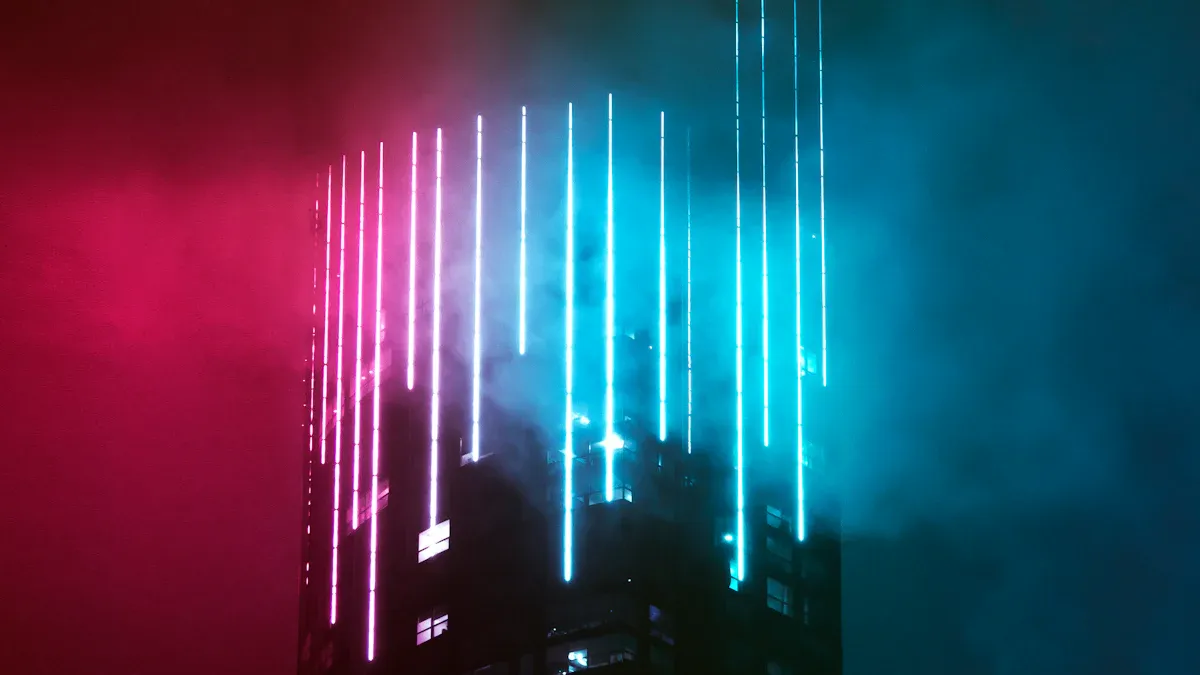
When you choose an LED light bar, knowing about beam patterns is very important. Different beam patterns have special uses. They can change how well you light up your area. Here’s a simple look at the main types of beam patterns for LED light bars and where they are usually used:
Beam Pattern | Description | Typical Applications |
|---|---|---|
Spot Beam | Gives focused light for seeing far away. | Mountain trails, open fields, fast driving. |
Flood Beam | Provides wide, even light for large spaces. | Campsites, rock crawling, tight spaces. |
Combo Beam | Mixes spot and flood beams for flexible lighting. | Vehicles for different uses, exploring unknown areas. |
Driving Beam | Improves regular headlights for more range and width. | Regular driving in moderate conditions. |
Fog Beam | Sends out a low, wide light to see through fog without glare. | Heavy rain, snow, or misty weather. |
Selecting the Right Pattern
Picking the right beam pattern depends on what you need. For example, if you drive in remote places, a spot beam helps you see far ahead. This beam focuses light into a narrow path, which is great for long distances. If you want to light up a big area, like a campsite, a flood beam gives you the wide coverage you need.
Combo beams are great because they let you switch between spot and flood modes. This is useful for vehicles that go on different types of terrain. If you often drive in fog, a fog beam is a good choice. This beam reduces glare and helps you see better in tough weather.
Knowing how beam patterns work will help you make a smart choice. Each pattern has a special job, and picking the right one can improve your safety and performance in any situation.
Durability and IP Ratings
Durability is very important when picking an LED light bar, especially for outdoor use. You need a product that can handle tough conditions and keep working well over time. The materials used to make the light bar are key to how long it lasts.
Material Quality
When thinking about material quality, look at these common options for strong LED light bars:
Aluminum: This material is light and does not rust. It often has an epoxy coating that makes it last longer. Aluminum also helps cool down the light bar, which keeps it working well.
Polycarbonate: This material is clear and can resist impacts. It is easy to clean and can handle bad weather. This means your light bar will still work in tough conditions.
Weather Resistance
IP ratings help you understand how well an LED light bar can resist outside elements. The IP rating system shows how much protection there is against dust and water, which is important for lasting in tough conditions. Here are some important points about IP ratings:
A higher IP rating means better protection from dust and water, which helps the light bar last longer.
For example, an IP67 rating means it is completely protected from dust and can be submerged in water. This level of protection affects how long the product will last.
By choosing an LED light bar made from good materials and with a strong IP rating, you can make sure your investment lasts longer and works well in different conditions.
Installation and Compatibility
Installing your LED light bar correctly is very important for good performance. A properly installed light bar helps you see better and keeps you safe. You need to think about different mounting options to find what works best for your vehicle and needs.
Mounting Options
You have many choices for how to mount your light bar. Here are some common styles:
High Mounting: This style is great for off-road driving. It cuts down on shadows and helps you see better. A high-mounted light bar lights up bigger areas, like campsites or work sites, by avoiding things in the way.
Low Mounting: For roads with less traffic, a lower mount might be better. This setup helps you see animals more easily, making nighttime driving safer.
Roof Mounting: Roof-mounted light bars give you a clear view and spread light well. This option is popular with off-road fans.
Bumper Mounting: Mounting on the bumper looks nice and is often used for trucks and SUVs. This position can make the vehicle look better while still providing good lighting.
Ensuring Compatibility
Making sure your light bar works with your vehicle’s electrical system is key for a good installation. Here are some important things to check:
Make sure the wiring kit fits the power needs and amperage of the LED light bar.
Check that the connector type works with both the LED light bar and your vehicle.
The wiring kit should have everything needed for installation, like a relay, fuse holder, switches, and connectors.
By focusing on these details, you can prevent electrical problems and make sure your LED light bar works well. Good installation and compatibility will give you a reliable lighting solution that fits your needs.
LED Light Bar Buying Guide
When you think about buying an LED light bar, it’s important to know how cost and features work together. You want to get the best performance without spending too much money.
Cost vs. Features
The price of LED light bars can change a lot based on their features and quality. Here’s a quick look at some popular brands and their price ranges:
Brand/Model | Price Range | Size Options |
|---|---|---|
Open Trail | $110 – $370 | 10″ to 50″ |
Open Trail DRLs | $120 – $370 | 7.5″ to 30″ |
SuperATV | $135 – $250 | 6″ to 30″ |
Harbor Freight | $48 – $200 | 8″ to 52″ |
As you can see, prices can go from cheap options to expensive ones. When looking at cost, think about the features that are most important to you. More expensive models usually have better durability, brightness, and special features like thermal management or different beam patterns.
Another key thing to think about is how different brands compare to each other. Here’s a comparison of some top brands based on lumens, size, and special features:
Brand/Model | Lumens | Size (inches) | Voltage Range | Price Range | Unique Features |
|---|---|---|---|---|---|
Rigid Industries E-Series Pro Midnight | 44,600 | 50 | 9 to 36 | High | Thermal management, universal fit |
Rigid Industries Radiance | 16,632 | 40 | 10-15 | High | Independent back-lighting, advanced technology |
Trail Master 21.5″ LED Light Bar | 10,800 | 21.5 | 10 to 30 | Budget | Compact size, affordable |
Pro Comp Motorsports Series | 14,280 | 30 | 9 to 36 | Moderate | Patented no-screw design, durable |
ARB Intensity V2 LED Light Bar | 25,080 | 40 | N/A | High | Hyperspot optics, dedicated flood and spot optics |
When you look at these factors, you can make a smart choice about which LED light bar gives you the best value for your needs.
Finding the Best Value
To find the best value, think about several things that affect how valuable a product seems:
Price: Stick to your budget while looking at options. Different things like LED chips and features can change the price.
Design: How it looks matters. Pick a design that matches your vehicle.
Watts: Higher wattage usually means brighter light, but efficiency is important too.
Brightness or Lumens: More lumens mean brighter light, which affects your choice and price.
Color Temperature: The quality of light matters. Look for temperatures close to daylight for better visibility.
Beam Pattern: Different beam patterns serve different needs, which can affect your choice.
Beam Angle: Adjusting it right is important to avoid blinding other drivers.
By thinking about these factors, you can find an LED light bar that fits your needs without spending too much.
Also, the quality of the power supply is very important for how well LED light bars work and how long they last. Here are some key points to think about:
Stability and Consistency in Light Output: Changes in power supply can cause flickering or uneven light, which can be hard on your eyes.
Dimming Performance: Poorly made power supplies may cause uneven dimming, which can be annoying.
Color Consistency: An unstable power supply can change the LED’s color temperature, leading to noticeable changes in light tone.
Flicker-Free Lighting: Low-quality power supplies can cause flicker, which is bad for your eyes.
Longevity of LEDs: Unstable power supplies can shorten the lifespan of LEDs due to heat or electrical damage.
Choosing a good power supply helps your LED light bar work well and last longer. Look for features like constant current or constant voltage, which help keep brightness steady and prevent overheating.
By following this LED light bar buying guide, you can confidently choose a product that fits your needs and budget.
Choosing the right LED light bar is important. You need to think about what you really need. First, check what type of light works best for your vehicle. Look at how the light spreads and any extra features that can help.
Type of Light Bar | Features | Target Audience |
|---|---|---|
Adjustable Brightness | You can change the brightness for different activities | Professionals, Gamers |
Fixed Brightness | Gives steady light, is cheap, and easy to use | General consumers, Educational institutions |
Keep up with new trends like smart features and eco-friendliness. This will help you make a good choice. Find options that meet your needs and enjoy better visibility and safety.
FAQ
What is the best lumen output for off-road driving?
For off-road driving, look for a lumen output between 6,000 and 10,000 lumens. This amount gives enough brightness to see well in dark or rough areas.
How do I find the right beam pattern for my needs?
Pick a spot beam for seeing far away and a flood beam for lighting up wide spaces. A combo beam is good for different driving situations.
Can I put an LED light bar on by myself?
Yes, you can install an LED light bar on your own. Just make sure you have the right tools and follow the instructions from the manufacturer for proper setup and wiring.
What does an IP rating mean?
An IP rating shows how well the light bar resists dust and water. Higher ratings, like IP67, mean better protection from outside elements.
How can I make my LED light bar last longer?
To help your LED light bar last, choose good materials, make sure it is installed correctly, and use a stable power supply to avoid overheating and flickering.
See Also
Selecting The Perfect LED Module For Your Project Needs
Installing LED Light Bars For Effective Lightbox Signage
Understanding The Functionality Of LED Light Bars In Lightboxes
